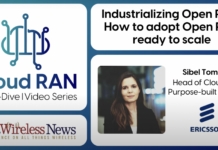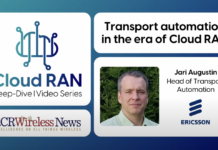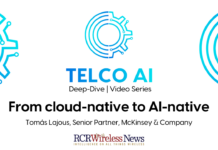Data-driven, software-first operations are key to telco AI success
Greenfield Japanese operator Rakuten Mobile, alongside its spin-off network equipment and software vendor Rakuten Symphony, has always done things in a markedly different way as compared to legacy telcos. Instead of sprawling workforces versed in different hardware components, field crews in every nook and cranny of the service area, and tangled back-office bureaucracies, think modern office space filled with software developers and data scientists working on Macbooks. This software-first ethos, with a strong focus on automating the things that can be automated, is likely in the cards for most operators, but Rakuten got there first thanks to, obviously, no legacy anything to deal with, as well as a more tech company-type culture. In the context of telco AI, Rakuten Symphony CMO Geoff Hollingworth, in conversation with RCR Wireless News, highlighted the importance of “data fidelity” in increasingly automating previously manual network processes.
As part of the Telco AI Deep Dive series, Hollingworth talked through Rakuten’s vision for itself and its customers, and stressed the need for operators to “go underneath the jargon and the hype and the terminology. Embrace a business-driven, ROI-driven use case, user group, work stream approach to starting to investigation yourself, how to understand what these new technology from automation, data and AI can do for you, and be very, very disciplined and prescriptive in that.”
Rakuten Mobile uses the analogy of autonomous vehicles where Level 1 refers to minimal (but some) driver assistance capabilities, Level 3 suggests conditional automation where most things are automated but some manual inputs are required, and Level 6 means the vehicle performs all driving tasks under all conditions with no need for humans. As it applies to the network, Hollingworth said the analogy applies to a mobile network “because in both cases what we are trying to do is let a machine see things so it can make decisions autonomously.”
Going up in levels of autonomy, Hollingworth envisioned “a keyboard with no buttons on in the network operations center.” But to get to this state, AI isn’t the starting point. “The journey really starts without AI because the only way that any machine can see what is happening to it or what it is experiencing is because of the data that it can actually understand. And having access to that data is the number one level of transformation…and there’s a couple of aspects to data that it’s always important to understand. The first aspect is what is the fidelity of that data?”
Another analogy, this one with Google Earth. “If you’re out looking at the earth from the moon, you don’t see much detail, but you zoom in, the moment you go down to another level of detail, you can start to actually make a different level of intelligent decision based on the added information. The enemy of good decisions is the average, is what people say. The second aspect of data is timeliness. So obviously having availability of that data as close to the moment and making it available to the engines that are watching it, the AI models, that then can interpret it is another factor on getting to a journey that you want to have full automation, full autonomy.”
Hollingworth continued: “And then what’s interesting is that all of that is true if you just want to automate. So automation is both a receiver of data so it can decide what to do, but also automation generates data at a different granular level so you can actually analyze it. And that’s one of the areas that Rakuten really has taken a leadership role in because they have digitalized all of the processes involved in winning the network, and that’s a great asset then. Without that data, you can’t see things and without that horizontal unified data, you will be down to level one automation where you are doing binary automations, go faster, go slower. But a bit like cruise control in a car is a good example of a level one automation.”
He also discussed how the learnings around AI and automation gleaned from Rakuten Mobile’s work in Japan are being fed into Rakuten Symphony and put in front of customers. Hollingworth said the approach is to “start with use cases and grade the use cases based on the most impactful first, and then understand what systems are required to automate those use cases, whether the systems you have support it or whether you need to do something with those systems. And to be very specific on doing ROI on the automation cases you choose. And we actually have built that into our automation tooling.”
Another important thing to consider as telco AI solutions are adopted, Hollingworth said, is around the organization, the people. This gets into an interesting area wherein telco AI needs data but much of the relevant process data is either stored in a legacy fashion or held in the minds of works. So how do you convert institutional memory into data that can be feed into telco AI systems?
Hollingworth called this piece “the number one problem. And an interesting question always to ask, if somebody reaches out and asks you, ‘I want AI to solve my problems,’ it’s always interesting to take a step back and ask the first question, ‘Well, how do you make decisions today and what data do you use to make those decisions and how do you get access to that data?’ And nine times out of 10, in a lot of situations, especially in very institutional organizations, they’re not using very much data. They don’t have very much data and therefore if you haven’t got the data, you can’t expect a machine to make better decisions than a human can. So data is 90% of the work in AI.”
In terms of urgency and outlook, Hollingworth said the urgency isn’t specifically related to AI but related to “how to enable everybody…in telecom to make better decisions faster.” You have to make sure there’s access to knowledge. “And once you have that, then AI allows you to answer questions in a much more open, creative…way…But I am a bit nervous with our industry that we tend to jump on magical answers as if they’re going to deliver the result we want. And, unfortunately, I believe that AI can completely transform our industry, but it is working at the basics that then end up with you being able to be a data-driven organization with AI.”
Looking at a mid-term Horizon, Hollingworth described the difference between early telco AI adopters and laggards “as profound as the difference between the business economics of an Amazon Web Services versus a traditional enterprise IT service vendor. You won’t be able to compete at the velocity required, at the agility required, and then at the business return…I think one of the problems we have is that 70%-plus of our energy in the industry is purely on just keeping the network running and we don’t have enough time or budget to actually decide what we want to provide the value to the customers above that. That should be reversed with this journey.”



